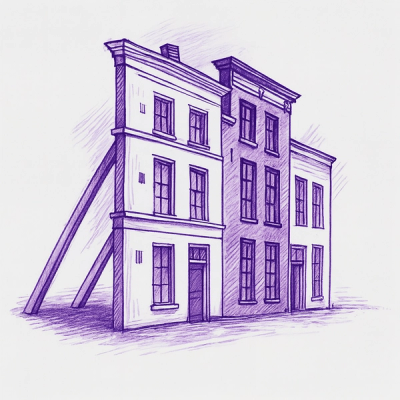
Security News
Official Go SDK for MCP in Development, Stable Release Expected in August
The official Go SDK for the Model Context Protocol is in development, with a stable, production-ready release expected by August 2025.
nativescript-slides
Advanced tools
###The plugin formally known as nativescript-intro-slides
videos by Brad Martin
##Example Usage: ###XML
<Slides:SlideContainer>
<Slides:Slide class="slide-1">
<Label text="This is Panel 1" />
</Slides:Slide>
<Slides:Slide class="slide-2">
<Label text="This is Panel 2" />
</Slides:Slide>
<Slides:Slide class="slide-3">
<Label text="This is Panel 3" />
</Slides:Slide>
<Slides:Slide class="slide-4">
<Label text="This is Panel 4" />
</Slides:Slide>
<Slides:Slide class="slide-5">
<Label text="This is Panel 5" />
</Slides:Slide>
</Slides:SlideContainer>
###CSS
.slide-1{
background-color: darkslateblue;
}
.slide-2{
background-color: darkcyan;
}
.slide-3{
background-color: darkgreen;
}
.slide-4{
background-color: darkgoldenrod;
}
.slide-5{
background-color: darkslategray;
}
Label{
text-align: center;
width: 100%;
font-size: 35;
margin-top: 35;
}
Great for Intros/Tutorials to Image Carousels.
To use the intro slide plugin you need to first import it into your xml layout with xmlns:Slides="nativescript-slides"
when using the intro slide plugin you need at least two <Slides:Slide> views inside of the <Slides:SlideContainer>.
add as many <Slides:Slide> as you want.
the SlideContainer class also has public nextSlide and previousSlide functions so you can add your own previous and next buttons as needed.
the <Slides:SlideContainer> element also has a property called loop which is a boolean value and if set to true will cause the slide to be an endless loop. The suggested use case would be for a Image Carousel or something of that nature.
the <Slides:SlideContainer> element also has a property called velocityScrolling which is a boolean value and if set to true will calculate transitions speeds based on the finger movement speed.
the <Slides:SlideContainer> element also has a property called pageIndicators which will add indicator dots to the bottom of your slides.
the <Slides:SlideContainer> element also has a property called interval which is a integer value and the value is in milliseconds. The suggested use case would be for a Image Carousel or something of that nature which can change the image for every fixed intervals. In unloaded function call page.getViewById("your_id").stopSlideshow() to unregister it (your_id is the id given to <Slides:SlideContainer>), it can be restarted with startSlidShow.
To use the slides with Angular2 and the registerElement from nativescript-angular you will want to set the SlideContainer's property of angular to true. Then in your angular component in the ngAfterViewInit. you will want to have an instance of your slide container to call the function constructView().
androidTranslucentStatusBar: boolean - If true, the Android status bar will be translucent on devices that support it. (Android sdk >= 19).androidTranslucentNavBar: boolean - If true, the Android navigation bar will be translucent on devices that support it. (Android sdk >= 19).npm run setup to prepare the demo projectnpm run buildnpm run demo.android or npm run demo.iosTo achieve a much smoother drag on android simply go into the gestures.android.js file in the tns-core-modules here
/node_modules/tns-core-modules/ui/gestures/gestures.android.js
and change
CustomPanGestureDetector.prototype.getMotionEventCenter = function (event) {
var count = event.getPointerCount();
var res = { x: 0, y: 0 };
for (var i = 0; i < count; i++) {
res.x += event.getX(i);
res.y += event.getY(i);
}
res.x /= (count * this.density);
res.y /= (count * this.density);
return res;
};
to
CustomPanGestureDetector.prototype.getMotionEventCenter = function (event) {
var count = event.getPointerCount();
var res = { x: 0, y: 0 };
for (var i = 0; i < count; i++) {
res.x += event.getRawX();
res.y += event.getRawY();
}
res.x /= (count * this.density);
res.y /= (count * this.density);
return res;
};
please note this will change the panning gesture for your entire project.
###Thanks to these awesome contributors!
And thanks to Nathan Walker for setting up the {N} plugin seed that was used to help get this plugin up and running. More info can be found about it here: https://github.com/NathanWalker/nativescript-plugin-seed
##Contributing guidelines Contributing guidelines
##License
for {N} version 2.0.0+
FAQs
NativeScript Slides plugin.
The npm package nativescript-slides receives a total of 9 weekly downloads. As such, nativescript-slides popularity was classified as not popular.
We found that nativescript-slides demonstrated a not healthy version release cadence and project activity because the last version was released a year ago. It has 3 open source maintainers collaborating on the project.
Did you know?

Socket for GitHub automatically highlights issues in each pull request and monitors the health of all your open source dependencies. Discover the contents of your packages and block harmful activity before you install or update your dependencies.

Security News
The official Go SDK for the Model Context Protocol is in development, with a stable, production-ready release expected by August 2025.

Security News
New research reveals that LLMs often fake understanding, passing benchmarks but failing to apply concepts or stay internally consistent.

Security News
Django has updated its security policies to reject AI-generated vulnerability reports that include fabricated or unverifiable content.